Shrimp shumai is an easy dim sum recipe made from garlicky seasoned shrimp wrapped up inside a tender steamed dumpling with fresh herbs and ginger. This homemade recipe is super quick to make and even better than takeout!
There’s nothing better than making a favorite restaurant dish at home, for less. I also love my homemade General Tso’s chicken and this flavor-packed shrimp lo mein.
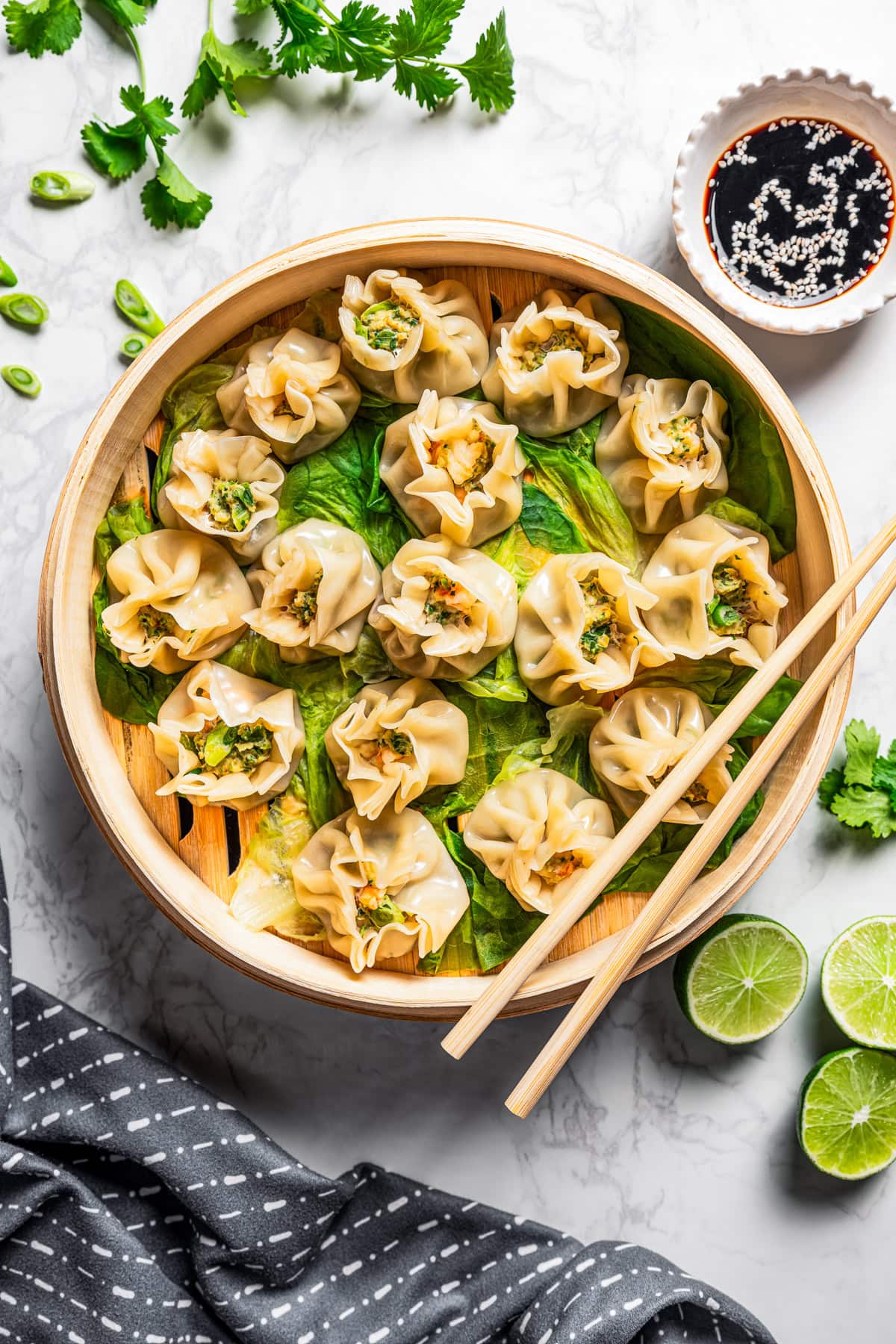
If, like me, you’re totally hooked on dim sum, I’m sure that you can relate: There are just TOO MANY delicious dumpling dishes out there, and not nearly enough time and money. When I started remaking some of my family’s go-to takeout dishes at home, I knew dumplings would be high on the list. Shrimp shumai is my all-time favorite, so here we are.
This homemade recipe turned out even better than I could have expected. These are little pockets of juicy goodness filled with ginger and garlic shrimp, bright herbs, and umami-packed seasonings. It was the perfect excuse to crack out my new steamer basket!
Why I Love This Shrimp Shumai Recipe
- Authentic flavor. All it takes is a few seasonings, some juicy shrimp, and a handful of fresh herbs to make an authentic shumai filling. These dumplings are fresh, savory, and even better than your favorite takeout.
- Homemade. There’s something therapeutic about folding the wrappers around the filling, and it doesn’t take long at all. The shrimp filling comes together lightning-quick in the blender or food processor. I use store-bought dumpling wrappers, but if you’re feeling ambitious, you can always make your own wrapper dough.
- Easy to cook. I’ve been looking for the perfect occasion to use my bamboo steamer. Shrimp shumai delivered! And if you don’t own a steamer basket, don’t worry. With very little McGyver-ing, you can make a makeshift steamer in minutes. Nothing should hold you back from a plate of tasty dim sum!
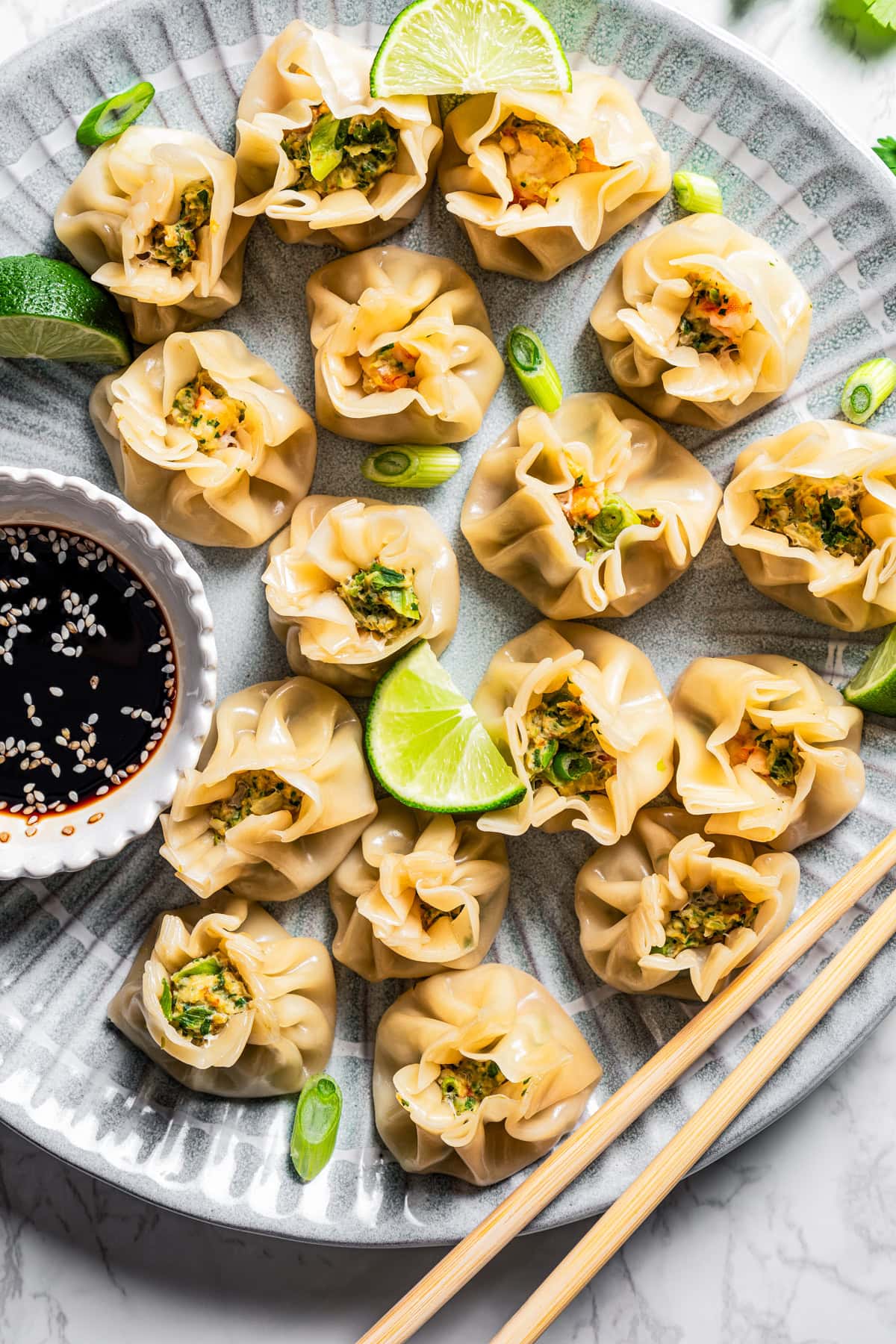
What Is Dim Sum?
Shrimp shumai, also called siu mai, is a type of dumpling that’s part of a larger family of Cantonese dishes called dim sum. According to Wikipedia, there are at least 2,000 types of dim sum across China (wowzers!!), where it’s usually eaten for breakfast or brunch.
So, yeah, dim sum has range. You’ll find different kinds of steamed buns (like cha siu bao), dumplings, noodle rolls, and more, filled with seafood, beef, chicken, pork, and veggies. Basically, all sorts of delicious fillings are wrapped in dough and then steamed, deep-fried, or pan-fried. I’m craving it again already!
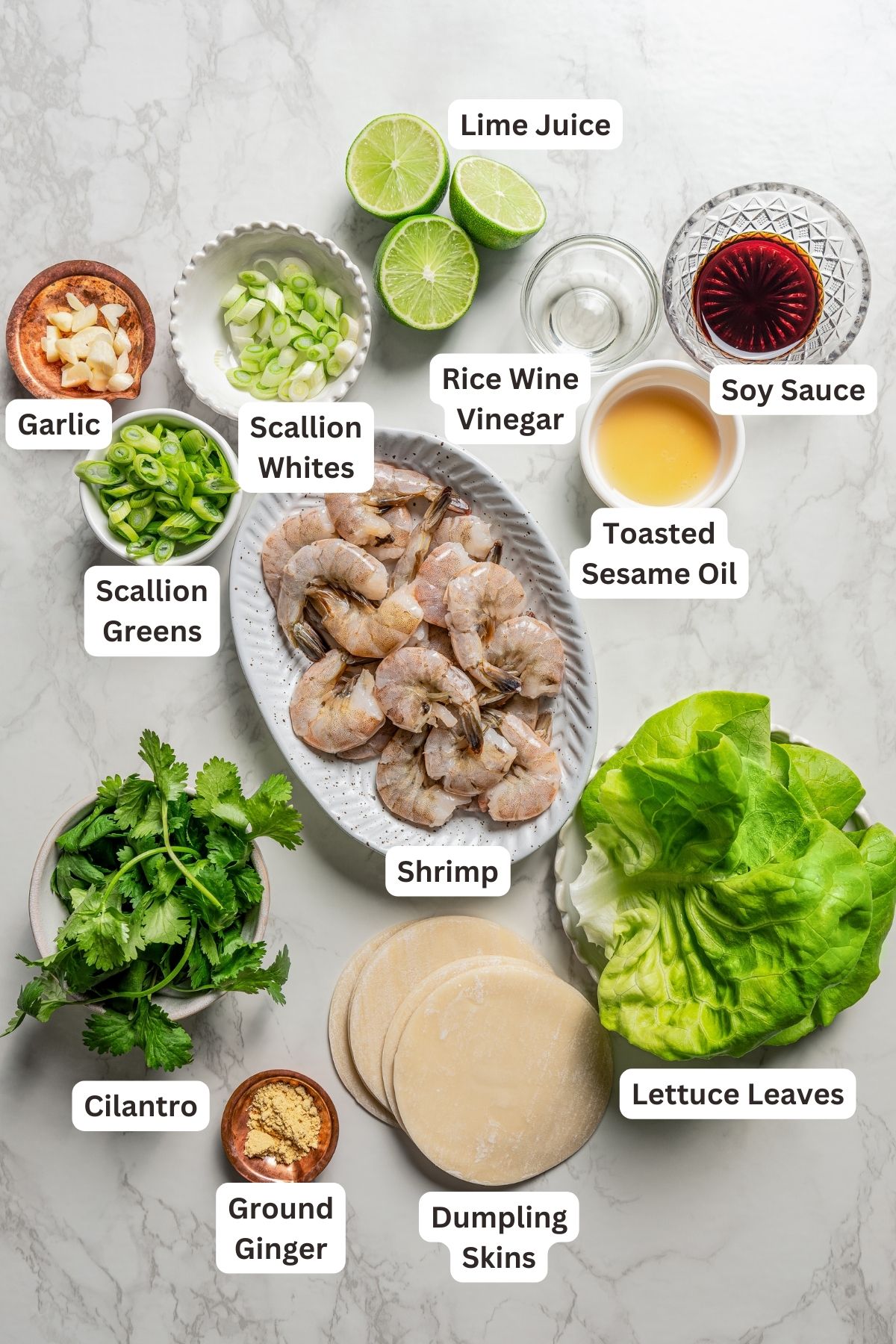
Recipe Ingredients
Here’s a short rundown of what you’ll need to make shrimp shumai. Check out the recipe card below the post for a printable list of the ingredients with amounts.
- Shrimp – Peeled and deveined. You can use fresh or frozen shrimp. If you’re using frozen, make sure to thaw them completely before you make the filling.
- Herbs – Fresh chopped cilantro, scallions, and garlic. Separate the white scallion slices from the green ones.
- Soy Sauce – You can substitute soy sauce with tamari or coconut aminos if needed.
- Rice Wine Vinegar – You can also use white wine vinegar or distilled white vinegar.
- Sesame Oil – There’s really no substitute for sesame oil since the flavor is so distinct. Do your best to get your hands on some. I use toasted, but regular sesame oil works, too.
- Ginger – Ground ginger works great since we’ll be blending it up anyway. You can also substitute 1 tablespoon of grated fresh ginger for every ¼ teaspoon of ground.
- Lime – I’m a stickler for freshly squeezed lime juice, but since there’s such a small amount in this recipe, you can use bottled lime juice if you don’t have fresh limes.
- Dumpling Wrappers – Use large or small round dumpling skins (you’ll need more if you’re using the smaller ones). I pick up dumpling wrappers from my local Asian supermarket, but you can also find them in the international food aisle.
- Lettuce Leaves – For lining the steamer basket. Iceberg lettuce works well here.
How to Make Shrimp Shumai
Homemade dim sum is a bit of a revelation. Never in a million years did I think it was THIS easy to make delicious steamed dumplings! There’s a teensy bit of technique involved in filling and folding the dumpling wrappers, but you’ll get the hang of it quickly. Here are the steps:
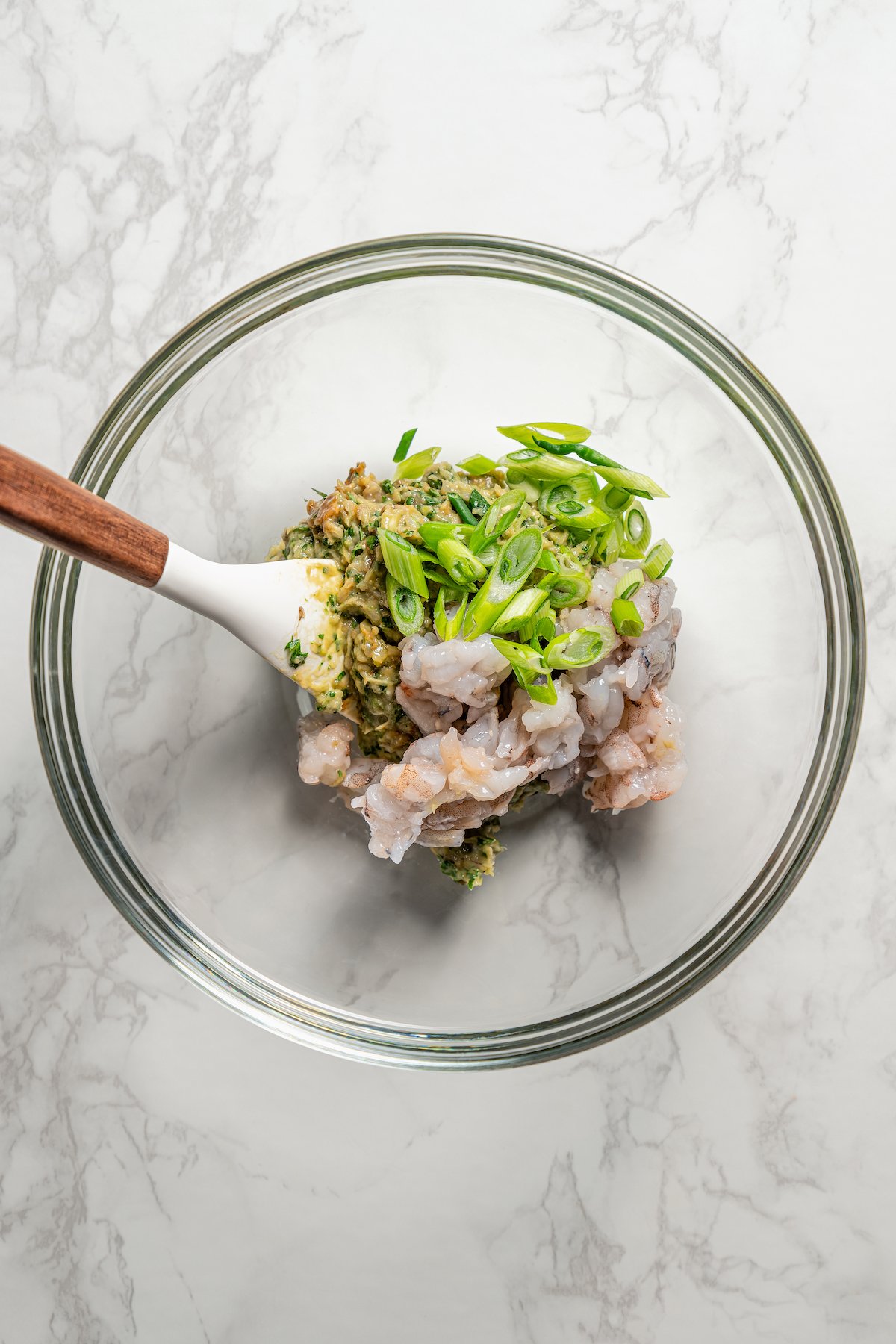
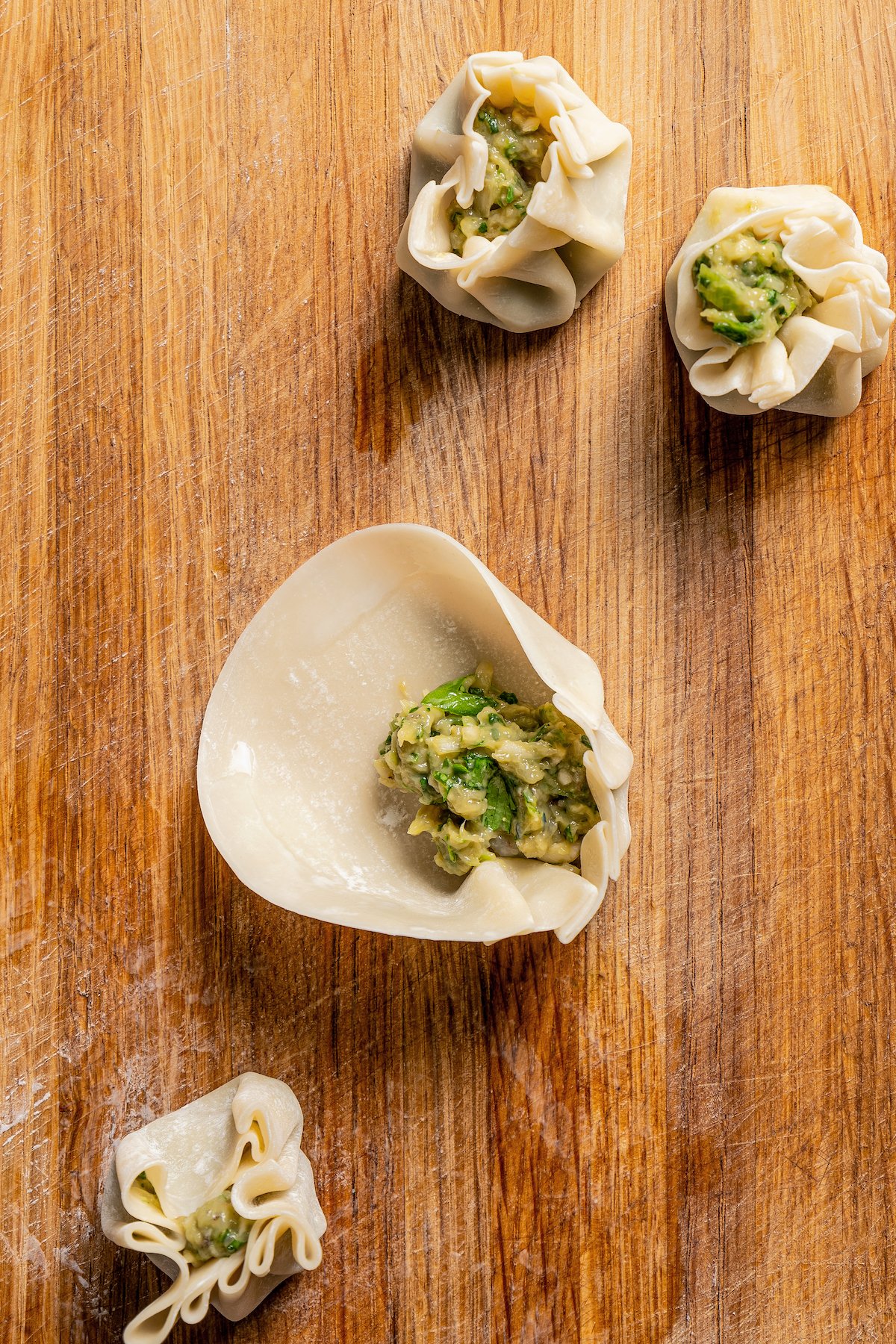

- Make the filling. First, blend chopped shrimp with the filling ingredients to make a paste. Next, combine the paste with finely chopped shrimp and scallion greens.
- Assemble the shrimp shumai. Place a spoonful of shrimp filling in the center of each dumpling wrapper. To fold your shrimp shumai, wet the edges of the wrapper and fold them around the filling, pressing the edges against each other so that they stick. Repeat with the rest of the shumai.
- Steam. Get a pot of water boiling beneath your basket steamer and line the basket with lettuce leaves. Working in batches, steam the shrimp shumai for 4-6 minutes until the shrimp inside is cooked through and pink.
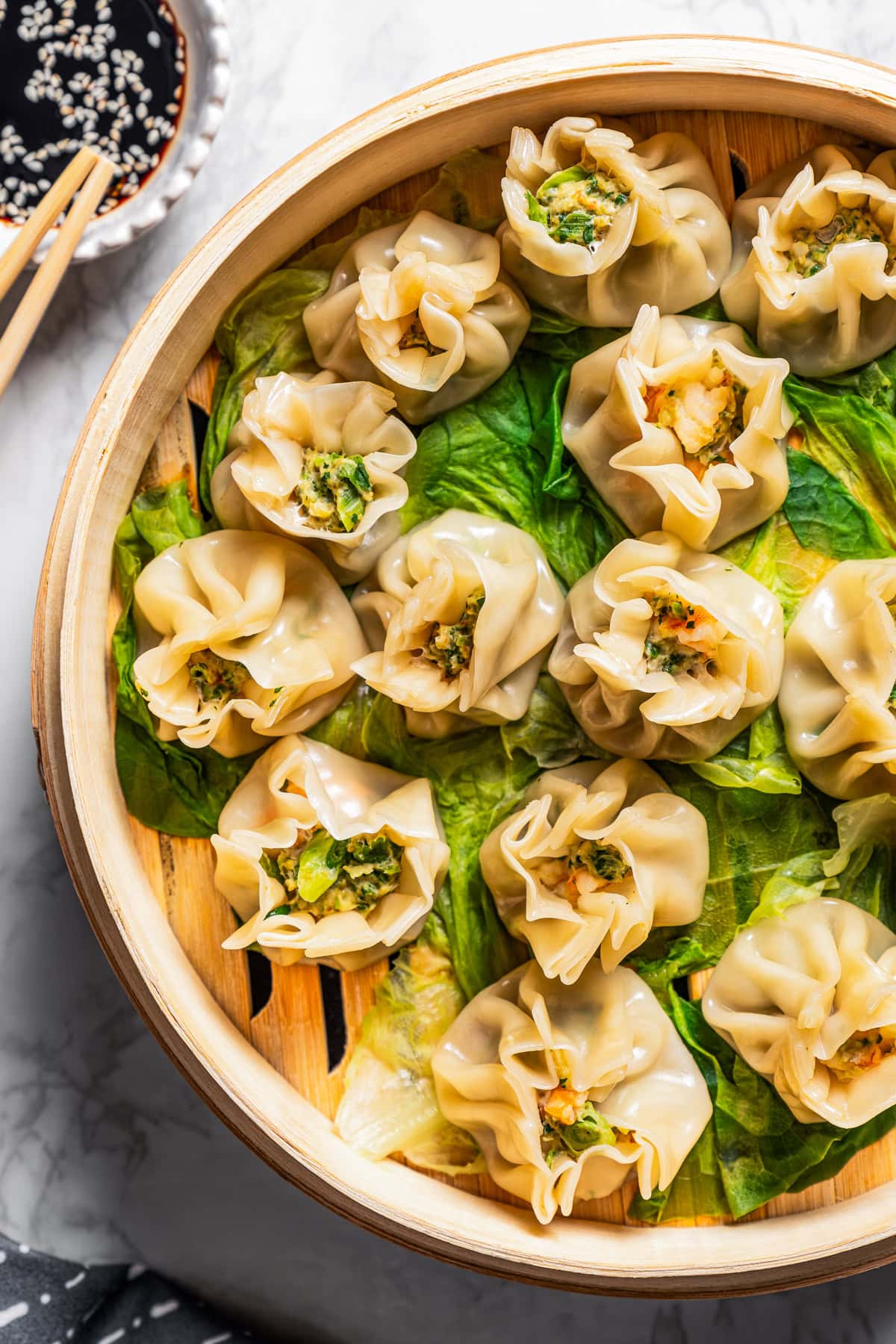
What Can I Use Instead of a Bamboo Steamer?
If you don’t have a bamboo steamer basket, you can still cook delicious dim sum. Before I owned a steamer, I often borrowed the trivet from my Instant Pot! Otherwise, a round wire rack also works. Here’s my trick for steaming shrimp shumai without a steamer basket:
- Choose a lidded pot wide enough to fit your trivet or wire rack. You’ll also need a heat-safe dinner plate that fits over the rack. Fill the pot with about ½” of water.
- Place your trivet/steamer rack into the pot. It should be above the water. Position the plate over the steamer rack and bring the pot to a boil.
- Carefully add your dumplings to the plate. Place a lid over the pot, and steam!
No trivet? Another option is to crumple 3 pieces of aluminum foil into golf ball-sized balls (they should be large enough to elevate the plate inside the pot). Weigh down the foil balls with the plate, boil the water, and steam your dumplings as directed.
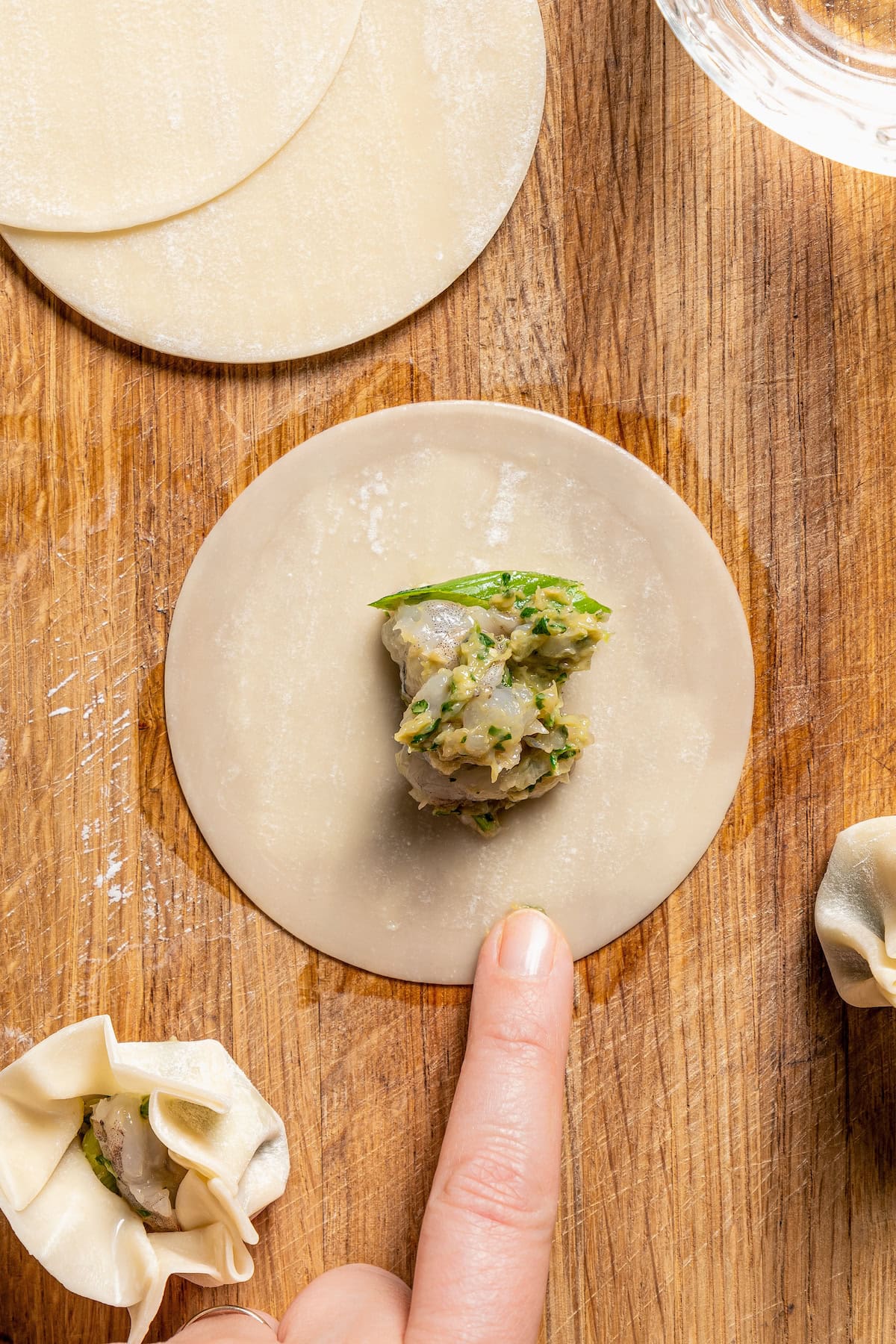
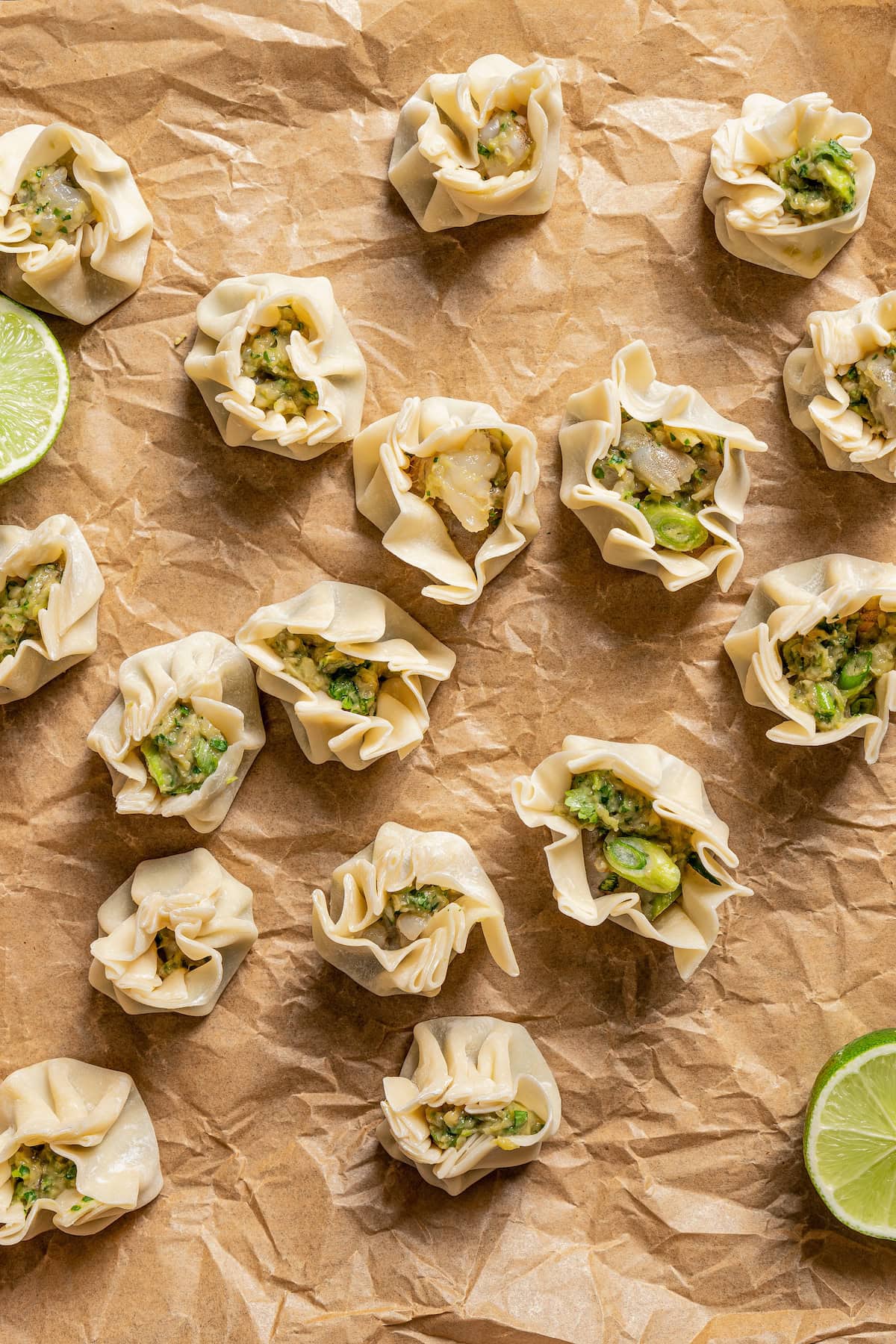
How to Keep Shumai From Falling Apart
It’s the worst-case scenario, but sometimes, homemade shumai falls apart. There are a couple of reasons why it happens. The main one is overstuffing the wrappers. Be careful not to get carried away with the filling.
Secondly, make sure to wet the edges of the wrappers before folding, as the moisture helps seal the dumplings shut. Just don’t wet them TOO much, as soggy wrappers are also likely to tear. A light brush with a wet fingertip is usually enough, and remember to pinch firmly.
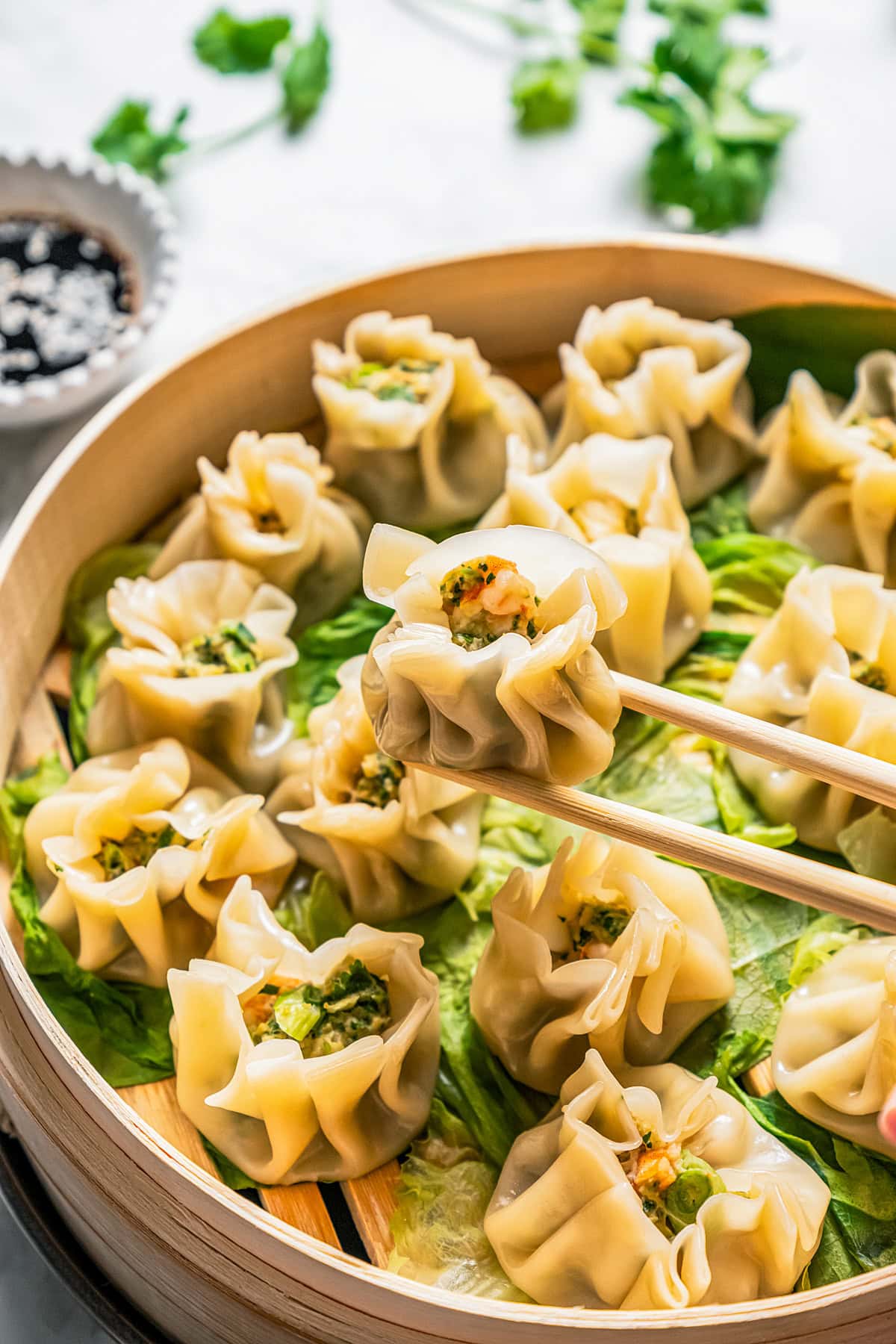
Frequently Asked Questions
The exact cooking time depends on the size of your dumplings, so the best way to tell if your shumai is cooked is to go by eye. They’re done when the dumpling wrapper turns translucent and the shrimp inside is bright pink.
Shrimp shumai are savory, juicy, and a little chewy. You get a hint of seafood from the shrimp, some freshness from the herbs, and umami from the soy sauce. There’s also toastiness from the sesame oil, and the lime juice brightens everything up nicely. So delicious!
Traditionally, you’d eat shumai with chopsticks. But if you’re still getting the swing of using chopsticks, go ahead and use a fork, or your hands! These shrimp dumplings make wonderful finger food. See below for easy serving ideas.
Serving Suggestions
I love to serve my dim sum as an appetizer with soy sauce or chili oil for dunking. Shrimp shumai goes great with a kani salad (another seafood favorite!) or spring rolls before we tuck into chicken and broccoli or chicken fried rice as a main.
I also love a Chinese-inspired surf-and-turf moment with shrimp shumai paired with kung pao beef. For a lighter meal or lunch, try these homemade maki rolls or cucumber sushi rolls, or a bowl of warming sizzling rice soup.
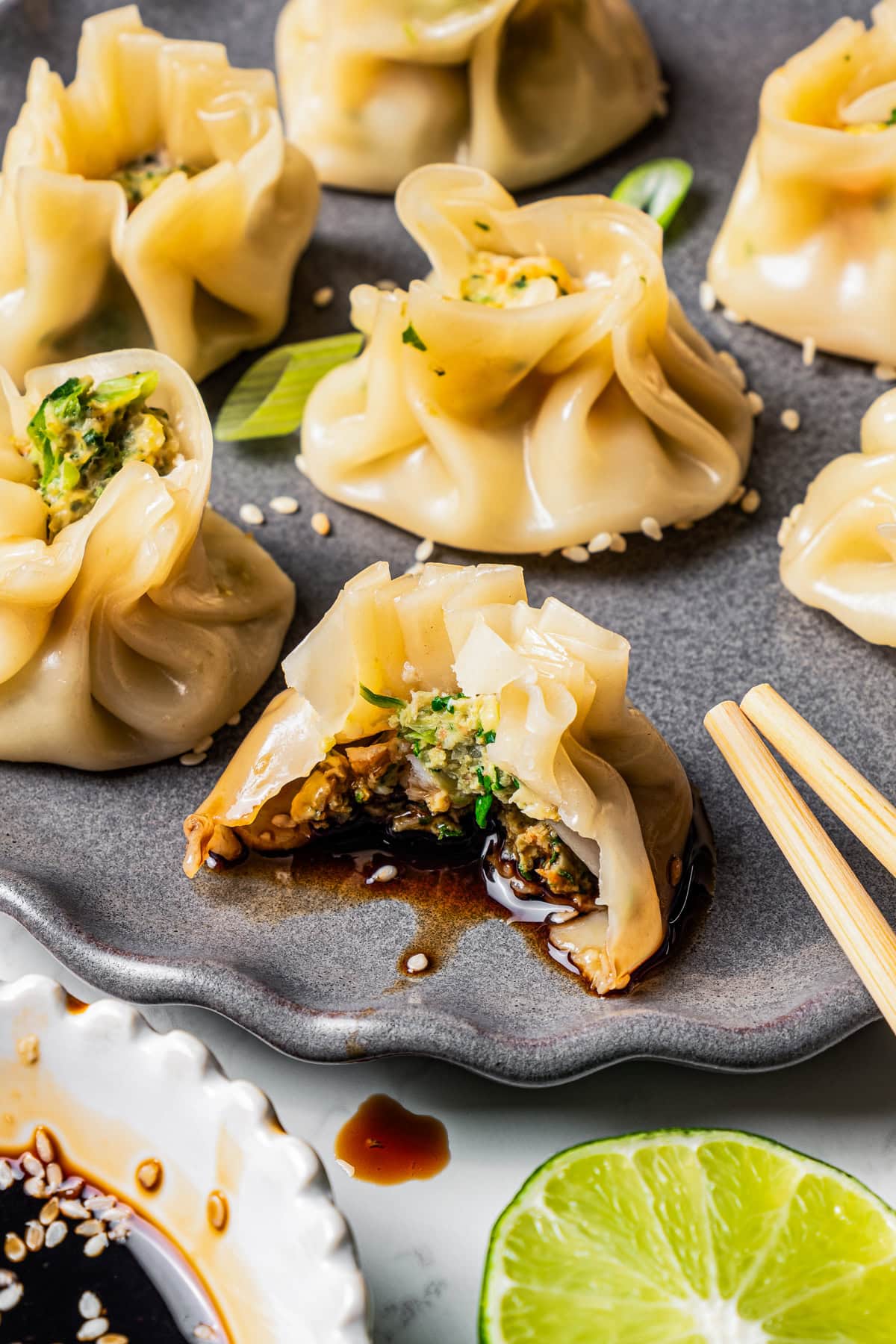
Storing and Reheating Leftovers
- Refrigerate. Store any leftover shrimp shumai in an airtight container in the fridge for up to 3 days.
- Reheat. You can reheat shrimp shumai in the microwave. Add a few spoonfuls of water to the dumplings and cover before heating, this way they’ll stay moist.
Can I Freeze Shrimp Shumai?
Yes! I’ve found that the best way to freeze shumai is to flash-freeze the raw shumai on a baking sheet. Afterward, seal them in an airtight container and freeze them for 2-3 months. You can steam the dumplings straight from frozen, adding a few extra minutes to the cooking time.
If you’re freezing cooked shumai, freeze them airtight and reheat them from frozen in the microwave (see above).
More Shrimp Recipes
Pin this now to find it later
-
Make the filling. Finely chop the shrimp and place half of it in a food processor with the cilantro, the whites of the scallions, the garlic, soy sauce, rice wine vinegar, toasted sesame oil, ginger, and lime juice. Pulse until the mixture becomes a paste. Transfer the shrimp paste to a mixing bowl and fold in the remaining chopped shrimp and the greens of the scallions.
-
Prep. Fill a pot with a few inches of water and set a steamer basket over it. Bring the water to a boil over medium-high heat while you assemble the shumai.
-
Assemble the shrimp shumai. Arrange several dumpling wrappers flat on a clean work surface and have a bowl of warm water nearby. Place about 1 tablespoon of the shrimp filling in the center of each wrapper. Dip your fingers in the warm water and wet the edges of the wrapper. Fold the edges of the wrapper around the filling, pressing the moist edges gently toward each other so they stick. Repeat with the remaining wrappers and filling.
-
Steam. Line the basket of the steamer with lettuce leaves and arrange the dumplings in the basket. Cover and steam for 4-6 minutes (6 minutes for larger dumplings) or until the shrimp turns pink. Do not crowd the steamer basket. Steam in batches if needed.
-
Serve. Transfer the dumplings to a serving plate and serve with a side of soy sauce or chili oil.
Serving: 1dumpling | Calories: 25kcal | Carbohydrates: 5g | Protein: 1g | Fat: 0.3g | Saturated Fat: 0.04g | Polyunsaturated Fat: 0.1g | Monounsaturated Fat: 0.1g | Cholesterol: 1mg | Sodium: 64mg | Potassium: 17mg | Fiber: 0.2g | Sugar: 0.1g | Vitamin A: 46IU | Vitamin C: 1mg | Calcium: 6mg | Iron: 0.3mg
Nutritional info is an estimate and provided as courtesy. Values may vary according to the ingredients and tools used. Please use your preferred nutritional calculator for more detailed info.


